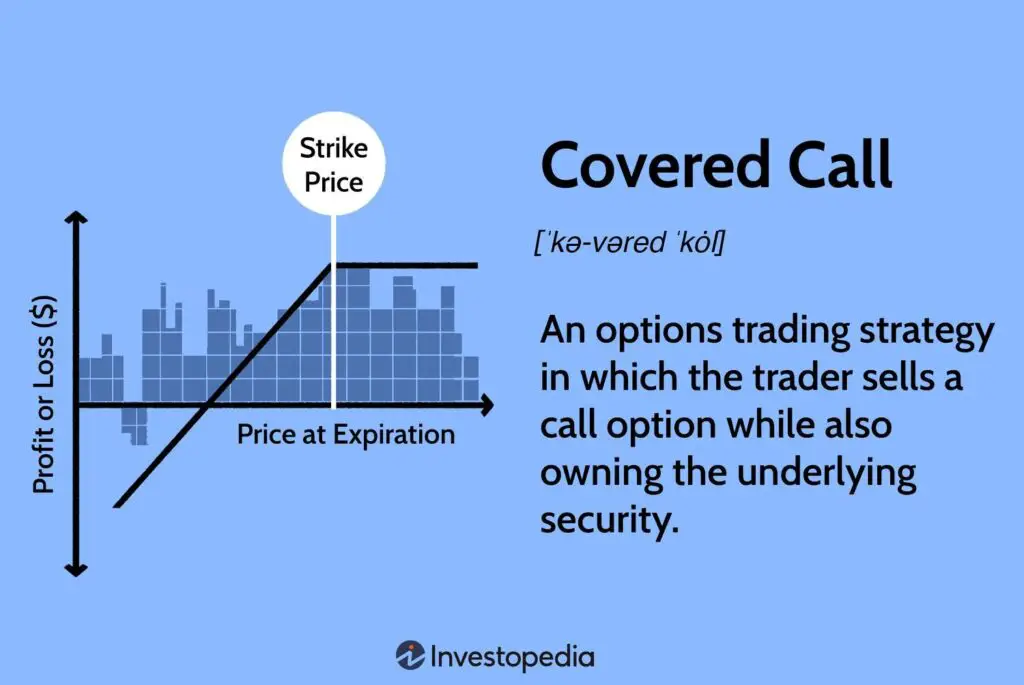Looking to increase the potential returns on your options trading? One strategy worth exploring is covered calls. What exactly are covered calls in options trading? Simply put, they involve selling call options on stocks you already own. By doing so, you can generate additional income from the premiums received. In this article, we will delve into the world of covered calls, explaining how they work and the benefits they offer. So, if you’re looking to enhance your trading strategy and potentially boost your profits, keep reading!
What are Covered Calls in Options Trading?
Options trading offers numerous strategies for investors to potentially profit from their trades. One popular strategy is known as covered calls. A covered call involves the combination of owning a stock and selling a call option on that same stock. In this article, we will dive into the details of covered calls, exploring how they work, their benefits, risks, and potential rewards.
How Does a Covered Call Work?
To understand how covered calls work, let’s break it down into its two components: owning a stock and selling a call option.
1. Owning a Stock:
When an investor owns shares of a particular stock, they have a long position in that stock. They believe the stock will increase in value over time, making it a potentially profitable investment.
2. Selling a Call Option:
On the other hand, selling a call option involves giving someone else the right to buy the stock from you at a specified price (known as the strike price) within a specific timeframe. In return for granting this option, you receive a premium from the buyer, which you keep regardless of whether the option is exercised.
When you combine these two components, you have a covered call strategy. As the stockowner, you sell a call option on the stock you own, generating income from the premium. If the option is exercised, you must sell your shares at the agreed-upon strike price.
The Benefits of Covered Calls
Covered calls offer several advantages for investors, including:
1. Income Generation:
Selling call options allows investors to earn additional income in the form of premiums. This can enhance overall portfolio returns, especially during periods of low market volatility.
2. Risk Mitigation:
By selling call options, investors can reduce their risk exposure. The premium collected acts as a buffer against potential losses if the stock price declines, providing a downside protection.
3. Profit Potential:
While the potential for capital appreciation may be limited when selling covered calls, investors can still benefit if the stock price remains relatively stable or experiences a slight increase. The premium received from selling the option enhances the overall return.
4. Portfolio Hedging:
Covered calls can also be used as a hedging strategy to protect against potential downside risk. By generating income from selling call options, investors offset losses if the stock price drops.
Risks and Considerations of Covered Calls
As with any investment strategy, covered calls come with certain risks and considerations. It’s important to be aware of these factors before implementing this strategy:
1. Limited Upside Potential:
By selling a call option, you cap your potential profits if the stock price significantly increases beyond the strike price. While this can be a disadvantage in a strongly bullish market, it provides some protection against missed opportunities if the stock price remains relatively stagnant.
2. Obligation to Sell:
When selling a call option, you must be prepared to sell your shares at the agreed-upon strike price if the option is exercised. This means potentially missing out on additional gains if the stock price continues to rise above the strike price.
3. Opportunity Cost:
If the stock price increases significantly and the option is exercised, you may feel regret for not holding onto the shares longer. This opportunity cost can be a downside of the covered call strategy.
4. Possibility of Loss:
It’s important to note that selling covered calls does not eliminate the risk of loss entirely. While the premium received provides some downside protection, if the stock price declines below the breakeven point, losses can still occur.
Implementing Covered Calls
To implement a covered call strategy, follow these steps:
1. Choose a Stock:
Select a stock that you currently own or are considering purchasing. Look for stable, high-quality stocks with liquid option markets.
2. Determine the Strike Price:
Decide on a strike price for the call option you plan to sell. This should be a price at which you would be comfortable selling your shares if the option is exercised.
3. Determine the Option Expiration Date:
Select an expiration date for the call option. Consider the time frame over which you expect the stock price to remain relatively stable or experience only slight fluctuations.
4. Sell the Call Option:
Contact your broker or use an online trading platform to sell the call option. Specify the stock, strike price, and expiration date. The premium received will be credited to your account.
5. Monitor and Manage:
Keep an eye on the stock price and the option’s behavior. If the stock price rises above the strike price and you believe it will continue to increase, you may consider buying back the call option to avoid selling your shares.
Remember to always assess the potential risks and rewards of each covered call trade and consider your investment goals and risk tolerance before implementing this strategy.
Covered calls can be an effective strategy for income generation, risk mitigation, and portfolio enhancement. By combining stock ownership with selling call options, investors can generate additional income and reduce risk exposure. However, it’s essential to understand the potential risks and limitations of covered calls before implementing this strategy. As with any investment, thorough research, careful planning, and ongoing monitoring are key to successful options trading.
Covered Calls Explained: Options Trading For Beginners
Frequently Asked Questions
Frequently Asked Questions (FAQs)
What are covered calls in options trading?
Covered calls in options trading refer to a strategy where an investor sells call options on a security that they already own. By doing so, they generate income from the premium received for selling the call options. The investor’s existing position in the security “covers” the call options, thereby reducing the risk.
How does the covered call strategy work?
In the covered call strategy, an investor who owns a particular security sells call options with a strike price above the current market price of the security. If the price of the security remains below the strike price until the option’s expiration, the investor keeps the premium earned by selling the call options. If the price rises above the strike price, the investor may have to sell the security at the strike price, but they still keep the premium.
What are the benefits of using covered calls in options trading?
Using covered calls in options trading offers several benefits. First, it provides a way for investors to generate additional income from their existing holdings. Second, it can help reduce the cost basis of the underlying security. Third, it can provide a limited downside protection against potential losses by earning premiums.
What are the risks associated with covered calls?
While covered calls offer certain benefits, they also involve some risks. One risk is the potential opportunity cost if the price of the underlying security significantly increases and the investor has to sell it at the strike price. Additionally, the premium earned from selling the call options may not fully offset any potential losses if the price of the security declines substantially.
Are covered calls suitable for all investors?
Covered calls can be suitable for investors who are willing to generate additional income from their existing holdings and are comfortable with the potential risks involved. It is important to assess your risk tolerance and understanding of options trading before implementing the covered call strategy.
Can covered calls be used for any type of security?
Covered calls can be used for a wide range of securities, including individual stocks, exchange-traded funds (ETFs), and even some options themselves. However, not all securities have liquid options markets, so it’s important to consider the availability of options contracts before implementing the covered call strategy.
How do I select the strike price for selling covered calls?
When selecting the strike price for selling covered calls, investors typically choose a strike price that is slightly above the current market price of the security. This allows them to earn a higher premium while still providing some potential upside if the price of the security increases but remains below the strike price.
What happens if the price of the underlying security drops after selling covered calls?
If the price of the underlying security drops after selling covered calls, the investor still keeps the premium earned from selling the call options. However, the value of their overall position in the security may decrease. It is important to consider the potential downside risk and have a risk management strategy in place when using covered calls.
Final Thoughts
Covered calls are a popular strategy in options trading. By selling a call option on an underlying asset you already own, you can generate income in the form of the premium received. This strategy provides limited upside potential in exchange for reducing downside risk. Covered calls can be an effective way to enhance returns and provide some protection to your portfolio. When implementing this strategy, it is important to carefully select strike prices and expiration dates to maximize potential profits and manage risk. Understanding what covered calls are in options trading can help investors take advantage of this strategy and potentially improve their overall investment performance.

